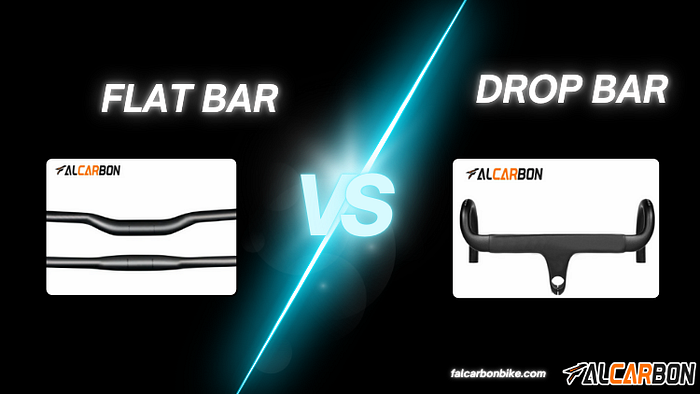Flat vs Drop Bars: Understanding Your Cycling Needs
In the world of cycling, there are many different types of handlebars, just like there are various types of pedals. However, as a beginner, choosing the right handlebars isn’t as straightforward as it seems because it can significantly affect my riding experience. When faced with the choice between flat bars and drop bars, I often find myself confused, as each type has its own advantages and functionalities.

First, let’s talk about drop bars. These handlebars are commonly used on road bikes and first appeared on high-wheel bicycles back in the 1880s. Their unique curved design allows me to choose from multiple hand positions while maintaining a more aerodynamic riding posture, which helps reduce wind resistance and increase speed. This makes them a favorite among many road cyclists and racers. Modern drop bars come equipped with grips and brake controls, offering five different hand positions for added versatility. However, due to their aggressive design, they can feel a bit challenging to control for someone just starting out.
Next, I want to discuss flat bars. The design of flat bars is simpler, being straight and level, and they are typically found on mountain bikes, especially for off-road riding. Flat bars provide a wider grip area and a more upright riding position, making them perfect for riders who prioritize control, comfort, and stability. For instance, when navigating steep downhill sections, flat bars allow me to control the direction better, enhancing my visibility and agility, which helps me tackle various terrains with ease.
When it comes to control and maneuverability, flat bars tend to be wider, giving me more precise handling in complex terrains. Especially on steep descents or muddy trails, the wider handlebars increase my control, allowing for quick directional adjustments and maintaining balance. While drop bars provide more stability at high speeds, they can be trickier to manage at slower speeds.
In terms of speed and efficiency, the aerodynamic design of drop bars enables me to ride in a lower position, reducing wind resistance and improving speed and overall riding efficiency. This is particularly beneficial for long-distance rides or road races. On the other hand, flat bars excel in control during low-speed situations and challenging terrains, making them ideal for my adventures in rugged mountain trails.
Regarding versatility and terrain, drop bars, with their various grip positions, are suitable for riding on paved roads, gravel paths, and various other surfaces, allowing me to maintain speed and comfort in different settings. In contrast, flat bars are more suited for urban commuting and mountain biking, as their design helps me navigate city traffic with agility while providing better visibility.
Ultimately, when considering a new bike, the choice between flat bars and drop bars will depend on the riding environment I plan to tackle. For off-road enthusiasts, flat bars are better for handling rough terrain and improving stability, while drop bars might be the better choice if I prioritize speed and efficiency.
Click here for a detailed comparison of the two: Flat Bar vs Drop Bar.
In conclusion, selecting the right handlebars should ultimately be based on my riding needs and personal preferences. I hope this analysis of “Flat Bars vs. Drop Bars” helps me better understand the characteristics of each type, enabling me to find the perfect match for my riding style, so that every ride is filled with enjoyment and a sense of achievement.
Comments
Post a Comment